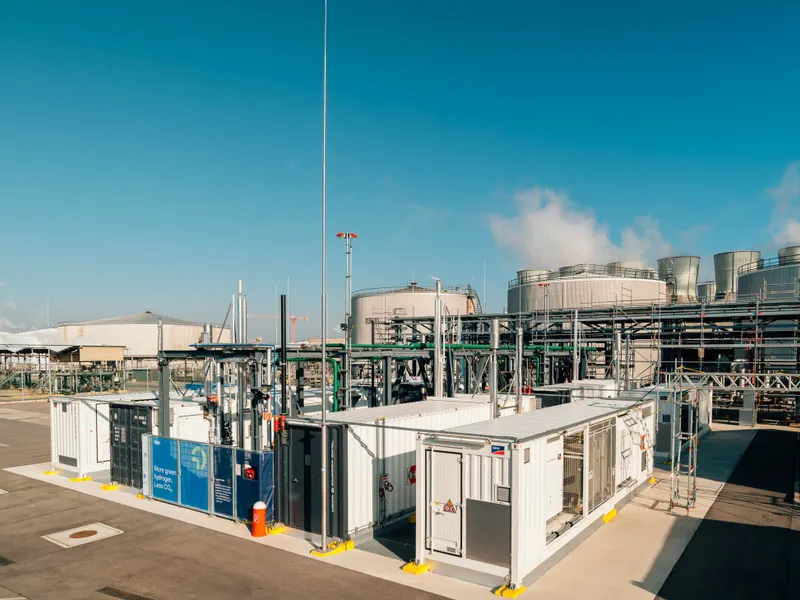OMV has officially launched its first commercial-scale green hydrogen production facility at its Schwechat refinery near Vienna, marking a major step toward sustainable fuel and chemical production. The 10-megawatt PEM (polymer electrolyte membrane) electrolyzer, the largest of its kind in Austria, will produce up to 1,500 metric tons of green hydrogen annually—reducing CO₂ emissions by up to 15,000 metric tons per year.
The project represents a €25 million investment and supports OMV’s broader goal of achieving net-zero emissions by 2050. Powered entirely by renewable energy from wind, solar, and hydro, the green hydrogen will be used as a low-carbon feedstock to produce sustainable aviation fuel (SAF), renewable diesel (HVO), and other essential chemicals.
“With the start-up of Austria’s largest electrolysis plant, we’re transforming how everyday essentials are produced,” said Martijn van Koten, OMV Executive Board Member for Fuels & Feedstock and Chemicals. “Green hydrogen is central to this shift, enabling us to decarbonize operations at our Schwechat site while strengthening Europe’s green hydrogen supply chain.”
A Certified Step Toward Sustainable Industry
The plant is certified under the EU Renewable Energy Directive (RED II) to produce renewable fuels of non-biological origin (RFNBOs) and is part of the WIVA P&G Hydrogen Initiative Model Region Austria Power & Gas. Development was supported by Austria’s Climate and Energy Fund and Kommunalkredit, reinforcing public-private collaboration to accelerate the energy transition.
The new facility not only supports OMV’s refinery operations but also aligns with European Union climate targets, offering a replicable model for green hydrogen production across the region.
How PEM Electrolysis Works
Green hydrogen is produced via PEM electrolysis, a clean process that splits water into hydrogen and oxygen using electricity from renewable sources. At the anode, water is split into oxygen and hydrogen ions. These protons move through the membrane to the cathode, where they combine with electrons to form hydrogen gas. Since water is composed of two hydrogen atoms and one oxygen atom, the process produces twice as much hydrogen as oxygen.
Climate Impact
According to TÜV SÜD, the green hydrogen produced at Schwechat offers a GHG footprint significantly lower than fossil-derived hydrogen, with the potential to reduce emissions equivalent to those produced by 2,000 people annually based on the EU average of 7.5 tons of CO₂ per person.
OMV’s green hydrogen project marks a pivotal move toward a climate-neutral, secure, and self-sufficient European energy future, leveraging innovation and renewable resources to fuel tomorrow’s low-carbon economy.



